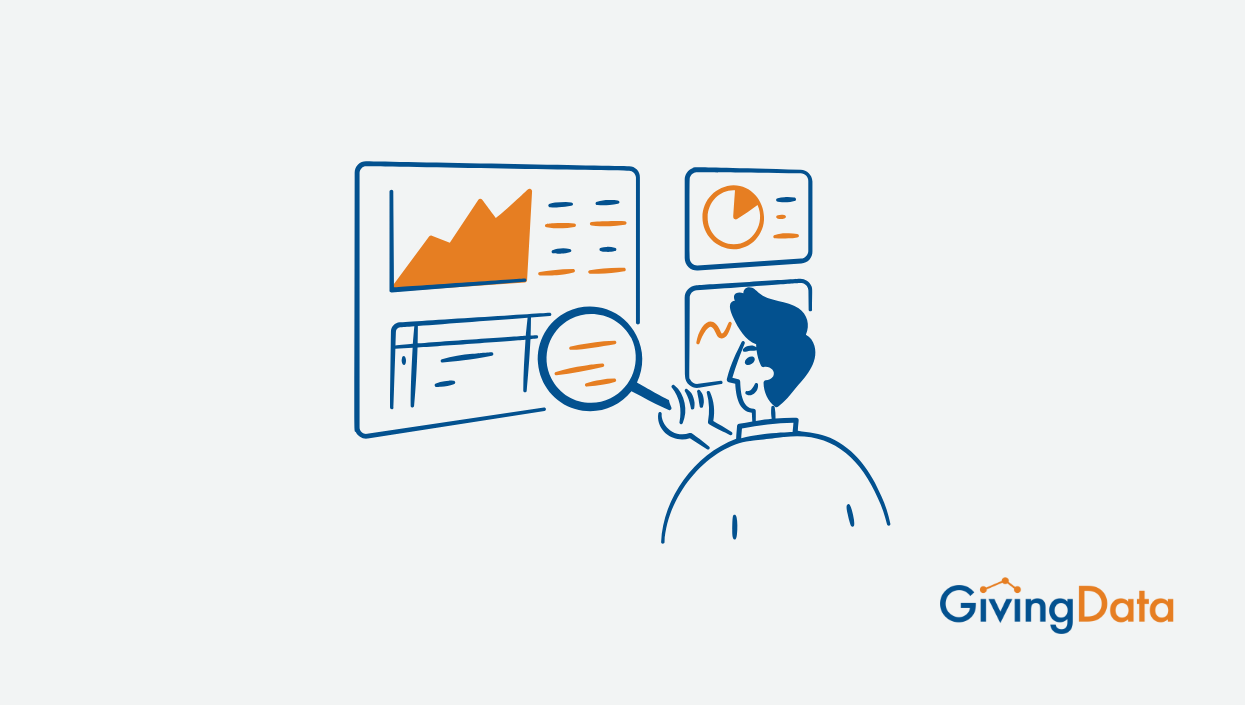
As foundations increasingly rely on data to guide decisions, it's becoming clear that standard reporting tools often fall short. Funders are turning to their grants management systems (GMS) and often integrations with business intelligence tools, like PowerBI and Tableau, to unlock deeper insights, streamline internal workflows, and support more strategic grantmaking.
The goal isn’t to simply gather data. It’s to shape that data into purpose-driven insights that teams can act on. Below are four strategies that grantmakers are using to turn reports into actionable insights.
1. Replace Static Reports with Live Dashboards
Does this sound familiar? In order to pull a single report, you export multiple spreadsheets, check (and double check) the numbers, and go through multiple rounds of manual edits. This process is not only time-consuming, but it also opens the door to inconsistencies and errors.
With integrations to source data, teams can leverage their GMS to access up-to-date views of grant approvals, payments, budgets, and more, all in one place. These dynamic reports are easier to update and share, which ensures visibility and alignment across the organization. Leadership teams and boards benefit from timely, well-organized information, while staff spend less time formatting data and chasing revisions.
However, your GMS may have all the reporting tools you need. For example, the GivingData homepage can be customized with any graph from the Super Search tool and data can be organized in a variety of chart types (pie, bar, donut, etc.).

2. Capture the Past and Shape the Future
Reports do more than simply summarize the past. Increasingly, organizations are using data visualization to support forward-looking planning. One common challenge in grantmaking is the year-end bottleneck, when a large amount of approvals happens in the final quarter. Dashboards that map anticipated approvals by quarter or month can help identify these patterns early, allowing teams to spread out workloads more effectively.
While data visualization products can assist with grant planning and provide robust reporting options, many grantmakers are leveraging tools already included in their GMS. For example, GivingData’s Scenario Planning tool allows grantmakers to experiment with grant scenarios and see the budgetary impact in real time.

3. Customize Reports to Reflect Your Strategic Priorities
Some of the most valuable insights come from data that standard reports don't surface. Do you ever wonder how many grant dollars are currently active in the field? If certain teams repeatedly fund the same grantees? How locally led funding efforts compare across regions?
Business intelligence tools allow organizations to define custom logic, apply calculations, and layer multiple data points to uncover answers. Whether it’s amortizing grant dollars across a term or analyzing grantee addresses against project locations, these tools offer a greater level of flexibility and by connecting to your GMS, data can be populated in real time.
4. Build Tools That Support Daily Work
Dashboards aren’t just for reporting, they can directly support the day-to-day work of grantmaking teams. Workflow trackers, for example, help staff stay on top of deadlines by linking key tasks to expected approval dates and flagging staff when action is needed. When these tools are connected to the GMS and guided by a shared logic model (like a simple Excel-based calculator), they eliminate shadow spreadsheets and promote consistency across teams.
Some dashboards also include forecasting views and team-specific task lists. These features give staff visibility into what needs attention next and help managers surface priorities. By streamlining task management and reducing duplicated effort, these tools help teams stay focused and aligned.
Embedding Purpose-Driven Reporting Into Your Organization
The most effective reporting tools are grounded in intentional design, clear processes, and the commitment to use data as a shared resource. Here are a few considerations for getting started:
- Start with the GMS. Explore the capabilities of your current (or future) system before layering on external tools.
- Build internal capacity. Teams should understand their data structure and taxonomy to ensure long-term success.
- Maintain a single source of truth. Connecting dashboards to live data in the GMS helps ensure accuracy and reinforces the importance of data integrity across the organization.
Purpose-driven reporting empowers organizations to plan more effectively, allocate resources strategically, and better communicate their impact. Whether you’re visualizing pipelines, tracking performance, or analyzing equity, purpose-driven insights help transform the way you work.
Watch our webinar, Purpose-Driven Insights: Transforming Grantmaking Data into Actionable Reports, to explore practical examples of how foundations are using their GMS combined with business intelligence tools to meet specific reporting needs.
Sign up for the GivingData Insights Newsletter
Receive actionable insights to streamline your grantmaking processes straight to your inbox.

